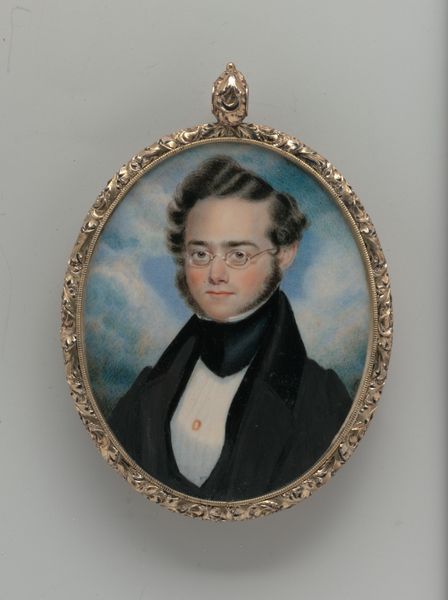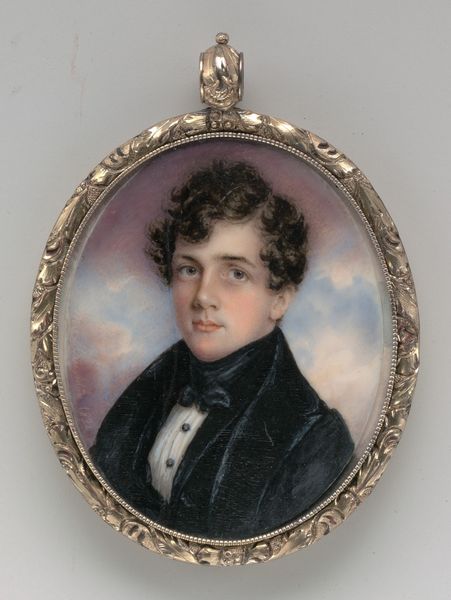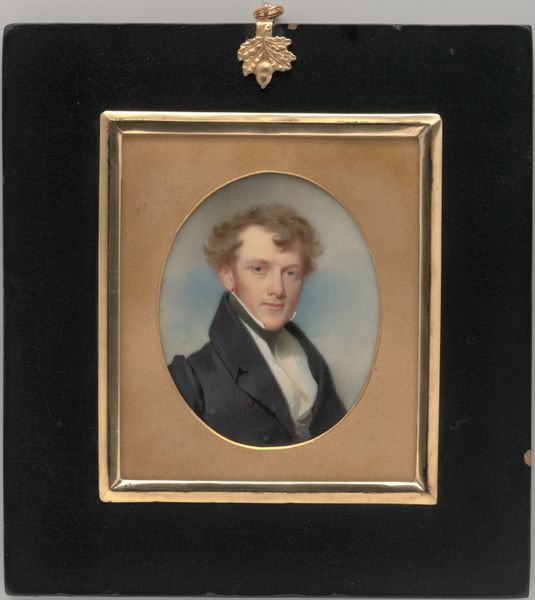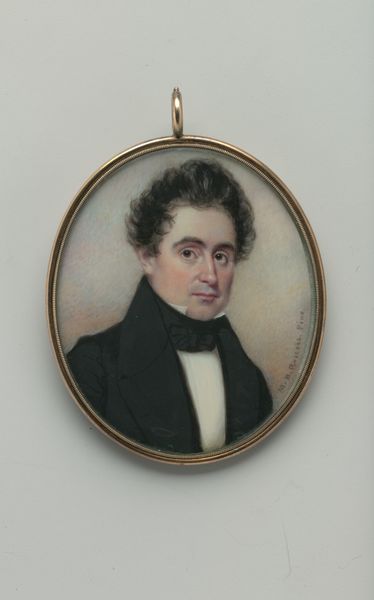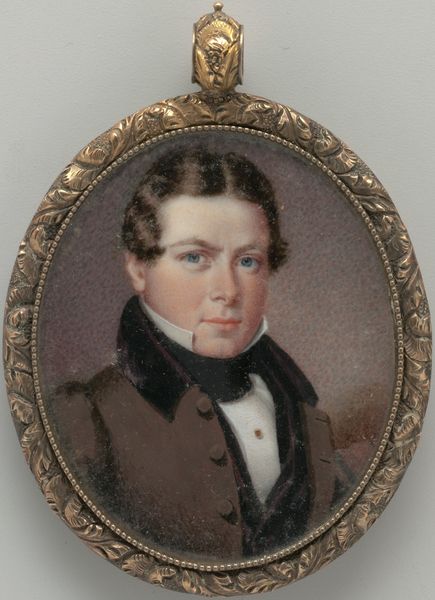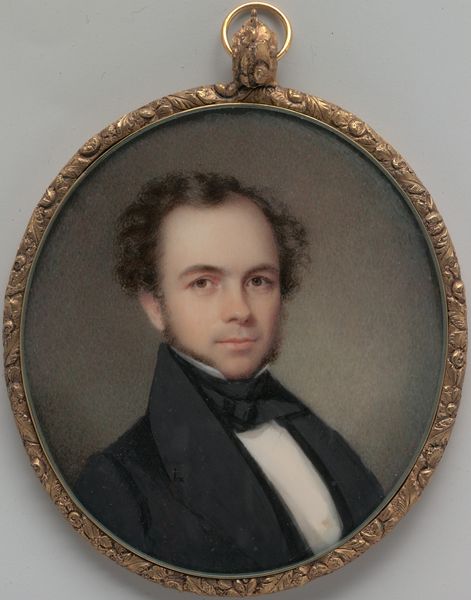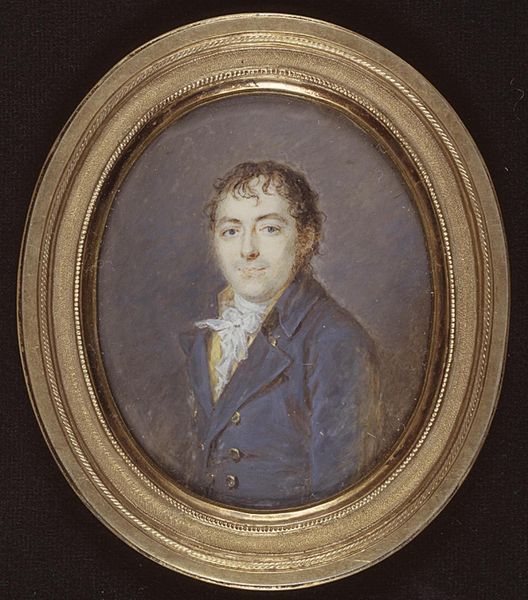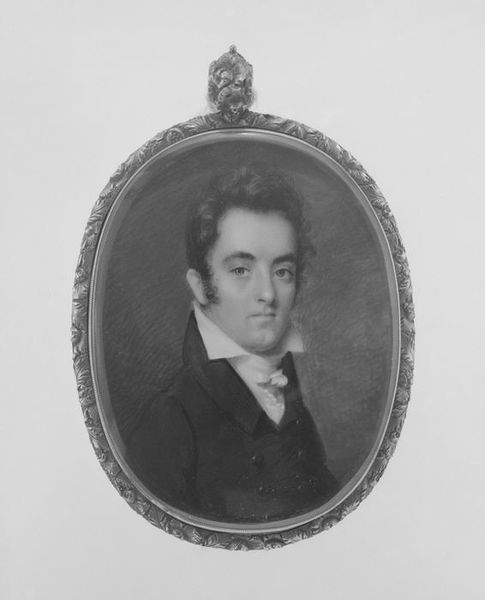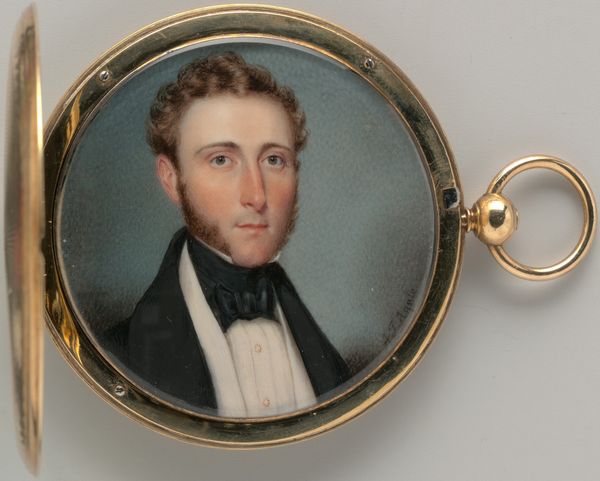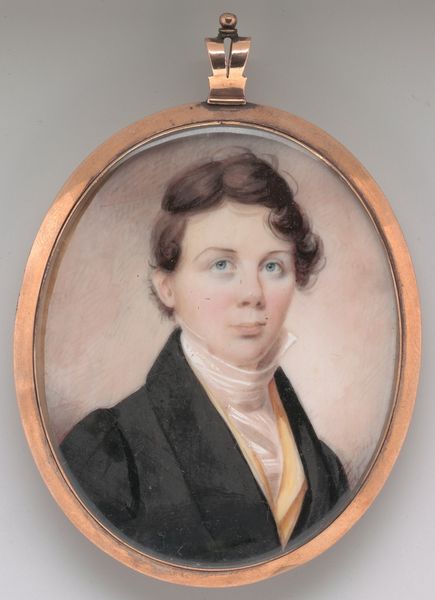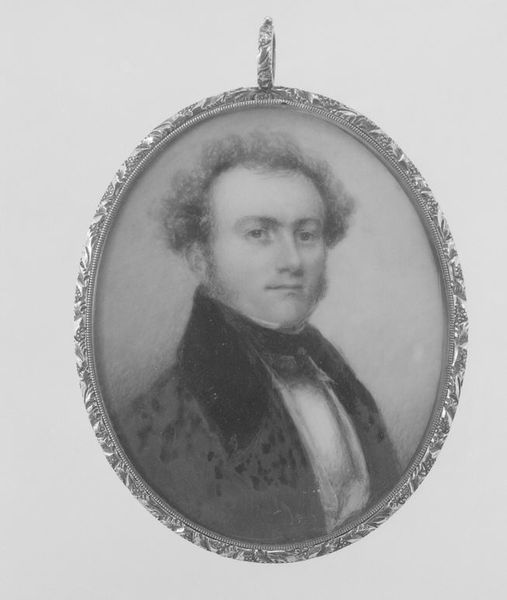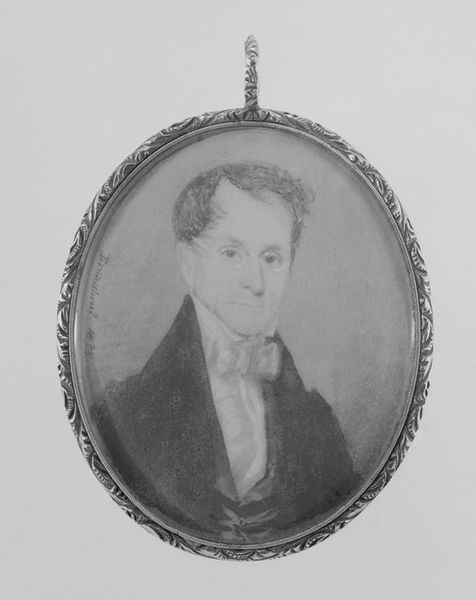
painting, oil-paint
#
portrait
#
painting
#
oil-paint
#
historical fashion
#
romanticism
#
history-painting
#
academic-art
#
miniature
Dimensions: 2 5/16 x 1 13/16 in. (6 x 4.7 cm)
Copyright: Public Domain
Editor: So, this is "Portrait of a Gentleman," painted by Carl Weinedel in 1836. It's an oil-on-panel miniature. What immediately grabs me is the ornate gold frame; it feels as important as the portrait itself. What's your take on it? Curator: The miniature format itself speaks volumes about material access and class. This wasn't mass-produced; it's an individualized commodity, requiring skilled labor in both the painting and the crafting of that decorative gold frame you mentioned. Consider the gold, its sourcing, the artisans involved. Editor: Right, it's definitely not a photograph readily available to just anyone. Did the frame have significance beyond being decorative? Curator: Absolutely. The frame transforms the image into something precious, almost jewelry-like. Think about who had access to gold in 1836, and the labor involved in its extraction and fabrication. This wasn't just about capturing a likeness; it was about displaying wealth and status, made possible through very specific social relations of production. What does the sitter's clothing communicate in this context? Editor: He looks to be wearing formal attire, a dark coat, maybe silk or velvet, a pristine white shirt with a cravat, again signifying someone from the upper class. So the painting is both image and object, communicating the same message? Curator: Exactly. The materials and means of production aren’t neutral. They are deeply embedded in economic and social hierarchies, reflecting power relations inherent in 19th century society. Editor: So I was viewing this piece too superficially, focusing only on its aesthetic quality, whereas its physical construction is actually crucial to its understanding. Curator: Precisely! Materiality reveals hidden stories about labor and social power.
Comments
No comments
Be the first to comment and join the conversation on the ultimate creative platform.
